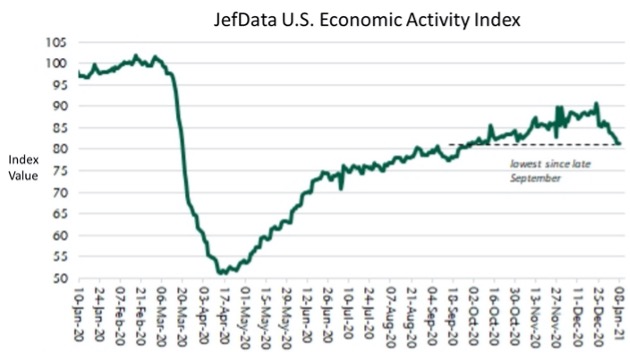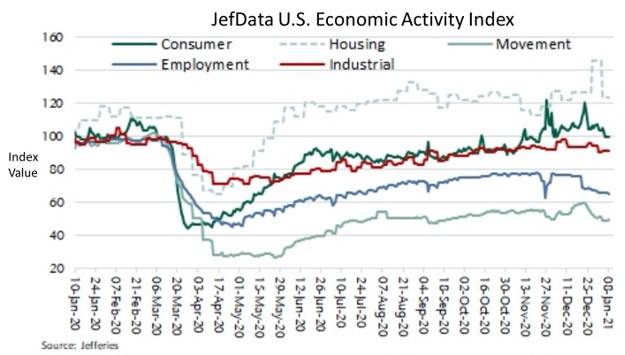 Welcome to Cabin Fever Week at Altimetry...
Welcome to Cabin Fever Week at Altimetry...
The term "cabin fever" originated during the settling of the frontier to describe folks working deep in Northern Canada. It refers to the mental or even physical ailments that arise from being cooped up in one place with little to do. This can be amplified in the winter in particular... and people who are more than just "stir crazy" with cabin fever can be diagnosed with seasonal affective disorder ("SAD").
Most of us don't regularly have cabin fever on the mind in a given year. But with the way the past 10 months have gone, the term has re-entered everyday vocabulary with force.
With social distancing regulations, limited in-person interactions, and less time spent out of the house for health and safety reasons, many folks are having to confront how to deal with cabin fever.
The issue has become so common that we've seen a huge spike in literature written to treat cabin fever in the past 12 months as a result of the coronavirus pandemic.
Long before the pandemic, the Mayo Clinic – the world renowned medical center – came up with a list of five things to do to treat cabin fever and SAD. And considering that many of our readers are probably struggling with being cooped up – like we sometimes feel – we'll give out one of the tips each day this week.
The first tip the Mayo Clinic suggests is one that regular Altimetry Daily Authority readers have heard numerous times: prioritize exercise.
Staying active benefits us in many ways. It helps lower blood pressure and improve heart health. It reduces stress, anxiety, and depression. It also helps us have more energy, and improves memory and other cognitive functions.
Just between how exercise leads to us better oxygenating our entire bodies and the ways it changes the hormone levels we produce in positive ways, it's a powerful tool for staying healthy... and fighting that feeling of going stir-crazy.
Folks can do many exercises at home that are productive and safe. I'm a firm believer in doing burpees – dropping into a push-up position, coming back up to standing, and jumping into the air – as a great way to maximize your heart rate and get a good workout.
You can do them even if you have no equipment at home, since your workout is entirely using your own weight. This is especially useful if you don't have access to a gym or a dedicated workout area in your house.
As with any exercise routine, stay aware of the health effects and make sure it's suitable for you... and consider consulting your doctor first. However, keep exercise in mind for a good way to fight cabin fever.
 With the holidays behind us, people seem to be withdrawing again...
With the holidays behind us, people seem to be withdrawing again...
At least this is what a lot of real-time data are showing right now.
To look for the turning point, traditional data sets will be slow to update as they often rely on lagging indicators. Leading indicators are datapoints showing that something is "about to happen," while lagging indicators mean something "has happened." (We talked about the difference back in September.)
This is why looking at real-time data has become particularly popular since the onset of the pandemic. It allows analysts to get insight into economic information as it unfolds, instead of weeks or months later.
 One of the data composites we study regularly is financial-services firm Jefferies' JefData U.S. Economic Activity Index...
One of the data composites we study regularly is financial-services firm Jefferies' JefData U.S. Economic Activity Index...
The index is a blend of restaurant bookings, foot traffic, retail web traffic, mortgage applications, traffic congestion, unemployment applications, steel production, and many other variables.
The below chart consolidates these indicators and attempts to measure aggregate activity throughout the pandemic. As you can see, after hitting lows in March, many of these indicators have steadily risen from May until December. This matches the "waterfall" model we laid out back in July for how the economic recovery would take place.
However, since last month, the index has fallen to levels we haven't seen since September. Folks are concerned about the virus resurgence, political violence after what happened at the Capitol earlier this month, and the drop in spending after the holiday season.
This is a signal that economic growth is likely to come under pressure. People are spending more time at home rather than engaging with the economy.
 By breaking the data into smaller pieces, we can get a better sense of the driving force behind this drop...
By breaking the data into smaller pieces, we can get a better sense of the driving force behind this drop...
The chart below organizes the data points of the JefData Index by industry and shows change over time.
As with the aggregate chart above, we saw a steady recovery across the board after March. This recovery was led by an unprecedented surge in housing – fueled by the "At-Home Revolution."
After the turn of the calendar year, consumer spending and employment pulled down economic activity... which is unsurprising as the holiday spending rush ended and temporary employment contracts expired.
By looking at the short-term data, we can get a window into how the economy has rapidly shifted over the past few months. Unfortunately, the JefData doesn't show the path to a speedy recovery... which doesn't help folks struggling with cabin fever. Remember to exercise... and stay tuned this week as we explain some more tips to fight that cooped-up feeling.
Regards,
Joel Litman
January 25, 2021



 Welcome to Cabin Fever Week at Altimetry...
Welcome to Cabin Fever Week at Altimetry...



